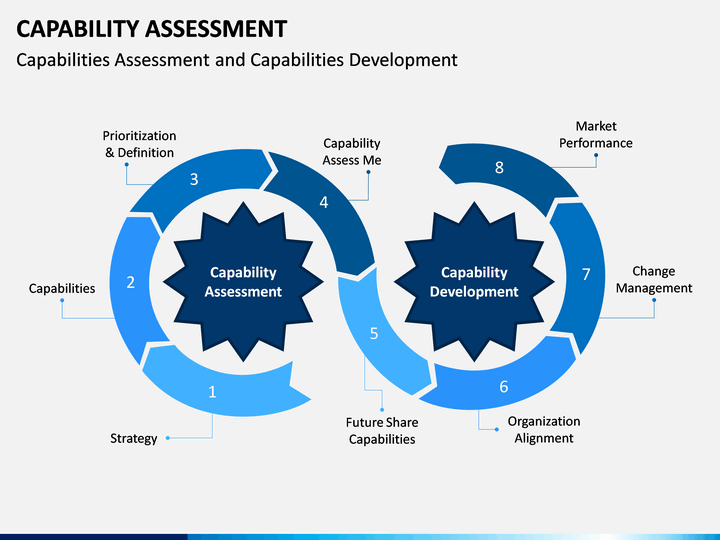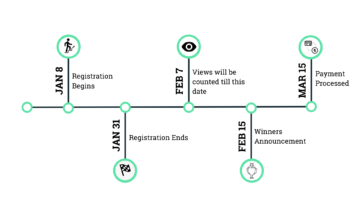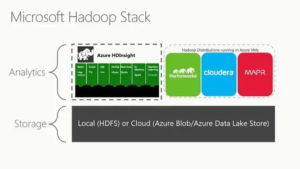Living in the era of the fourth industrial revolution, characterized by the convergence of physical and digital technologies, we witness many “smart” connected devices, from watches to speakers to smart TVs. This is the essence of Industry 4.0, powered by data. Data serves as the fuel driving constant technological breakthroughs, making it a valuable asset for businesses. Consequently, data literacy has become an essential workplace skill across various roles and organizations, regardless of size.
The ability to understand and effectively utilize data is critical in this data-driven age. By cultivating data literacy within your organization, you can unlock its full potential and position yourself for success in the digital landscape.
Table of contents
Why is Data Literacy Important?
Data literacy is important because it empowers individuals and organizations to make informed decisions, uncover insights, identify trends, and harness the full potential of data-driven technologies.
Faster Decision Making (Pace)
Data literacy accelerates decision-making processes in organizations. Employees are better able to quickly make educated decisions when they have simple access to data and are encouraged to use it, which enables the organization to respond to opportunities and challenges with agility.
Organizations that succeed in using data for decision-making are 2.3 times more likely to deliver superior business results, according to a McKinsey analysis. Let’s look at different levels of data culture in organizations:
| Data Culture Level | Average Decision-Making Time (Days) |
| Low | 30 |
| Moderate | 15 |
| High | 7 |
More Transparent Decision Making (Agility)
Transparency is a cornerstone of data literacy. It promotes trust within the organization as decisions are based on objective data rather than gut feelings. This transparency, in turn, enhances agility by reducing friction and resistance to change.
A study by Deloitte found that organizations with transparent data-driven decision-making processes experience 48% higher employee satisfaction. This transparency enhances organizational agility, as shown in Table 2:
| Transparency Level | Percentage Improvement in Agility |
| Low | 20% |
| Moderate | 35% |
| High | 50% |
More Democratized
Data culture democratizes access to data. It ensures that data is not the exclusive domain of data analysts or IT departments. Instead, it empowers employees to access, understand, and use data to support their roles.
A survey by Gartner revealed that organizations that actively promote data democratization are more likely to outperform their peers. This democratization fosters collaboration and innovation among employees of all roles.
Also Read: Difference Between Data-Driven and Normal Organization
Key Elements of Data Culture
To establish and sustain a thriving data culture within an organization, it is essential to delve deeper into the key elements that form the bedrock of this transformative approach. These components outline the fundamentals of data literacy and act as benchmarks for businesses wishing to make data-driven choices and promote data-driven thinking at all levels.
Data Literacy
The knowledge, skills, and abilities needed for people to successfully understand, interpret, and operate with data are collectively referred to as data literacy. This includes data analysis, visualization, and interpretation skills. Data literacy initiatives involve training employees to speak the language of data, enabling them to use data for problem-solving and decision-making.
Clear Objectives
Establishing clear and well-defined objectives is pivotal in building a data literacy. These objectives should be in alignment with the broader organizational goals and strategy. A data literacy without clear objectives risks becoming disjointed and ineffectual. Setting specific, measurable, achievable, relevant, and time-bound (SMART) data literacy goals provide direction and purpose to data initiatives.
Assessment of Capabilities

Before embarking on a journey to establish a data literacy, it is imperative to assess the current data capabilities within the organization. This includes evaluating existing data infrastructure, tools, and the level of data literacy among employees. This assessment serves as a baseline against which progress can be measured and areas for improvement identified.
Data Training
Building data literacy is an ongoing process that requires tailored data training programs. These programmes must be created to address the requirements of various personnel groups inside the company. Courses on data analysis, data visualization, statistical ideas, and technologies like data analytics software may be included in the training.
Access to Data
It is essential to ensure that pertinent data is readily available to all employees for a data literacy to flourish. This requires developing data dashboards that are easy to use, opening up data repositories, and putting data access rules that balance data security and usability into place.
Data Governance
To guarantee data security, compliance, and quality, strong data governance is required. Creating and implementing policies and processes that specify how data is gathered, processed, stored, and shared within the organization is known as data governance.
Communication:
Effective communication around data is fundamental to a data literacy. Encouraging discussions about data findings, insights, and challenges promotes transparency and collaboration. This open data dialogue fosters a culture where data is not just a tool but a shared resource.
Data-Driven Decisions:
Central to a data literacy is the promotion of data-driven decision-making. This entails making data a central factor in decision-making discussions and encouraging employees to back their proposals and choices with data-driven insights.
Experimentation
Encouraging a culture of data-driven experimentation is key to fostering innovation and continuous improvement. This involves allowing teams to test hypotheses, conduct A/B tests, and use data to drive new ideas and strategies.
Evaluation and Adaptation
A data literacy is not static; it evolves. It is imperative to continuously assess and refine data literacy initiatives based on feedback, changing needs, emerging technologies, and evolving business landscapes.
Transform into a Future Ready AI Enterprise with Analytics Vidhya. Get in Touch Now!
10 Steps to Implement Data Literacy in Your Organization
1. Educate Employees
Investing in data science skills training is vital. According to a survey by TDWI, 80% of organizations saw improved data literacy among employees after implementing data training programs.
2. Regular Training
Regular training sessions keep employees updated. A study by IBM found that organizations that provided monthly data training sessions had an 84% higher adoption rate of data-driven practices.
3. Stay Up-to-Date
Staying informed about industry developments is essential. A report by Capgemini highlights that organizations that regularly updated their data tools and technologies experienced a 32% increase in data-related ROI.
4. Define Objectives
Alignment with organizational goals is critical. The Aberdeen Group found that organizations with aligned data literacy objectives generate higher brand awareness and average deal size.
5. Assess Capabilities
A comprehensive assessment reveals areas for improvement. A case study by Deloitte showed a 12% increase in data-related ROI after a thorough capability assessment.
6. Data Training
Tailoring data education programs to specific needs is effective. A report by DataCamp found that customized data training resulted in a higher retention rate among employees.
7. Access to Data
User-friendly access systems improve productivity. An example by Tableau of Pepsico reported a 90% reduction in the time spent searching for data after implementing user-friendly data access tools.
8. Data Governance
Effective governance ensures data quality. A report by Gartner states that organizations with well-implemented data governance policies report a 50% reduction in data-related errors.
9. Communication
Encouraging data dialogue improves outcomes. A report by Harvard Business Review found in a question on Kaggle’s 2017 survey of data scientists, to which more than 7,000 people responded, four of the top seven “barriers faced at work” were related to last-mile issues, not technical ones: “lack of management/financial support,” “lack of clear questions to answer,” “results not used by decision-makers,” and “explaining data science to others.”
10. Data-Driven Decisions
Incentivizing data-driven choices drives success. A case study by Amazon Web Services (AWS) demonstrated an increase in revenue after introducing incentives for data-driven decision-making.
From running data literacy programs to performing maturity assessments and building internal communities, Analytics Vidhya is here to help you build a strong data culture in your organization.
Challenges in Establishing Data Culture
Establishing a data literacy within an organization is a transformative journey but has its share of challenges. These challenges, often encountered during the process, require careful consideration and proactive strategies to overcome. Let’s delve into these challenges in more detail:
Resistance to Change
Many employees are comfortable with traditional decision-making methods and may be reluctant to embrace data-driven practices. This resistance can stem from fear, skepticism, or a lack of understanding about the benefits of data literacy. Overcoming this challenge requires strong leadership support, effective communication, and a gradual transition that respects existing workflows while introducing data-driven elements.
Data Silos
Data silos refer to the isolation of data within different departments or systems, making it challenging to access and integrate data seamlessly. These silos hinder collaboration and limit the organization’s ability to derive meaningful insights from its data assets. Addressing data silos involves implementing integration initiatives that break down barriers between departments, fostering a culture of data sharing and collaboration.
Low Data Literacy
Data literacy, or the ability to understand, analyze, and interpret data effectively, is not uniformly distributed across an organization. Many employees may lack the necessary data skills, which can impede the adoption of data literacy. Organizations should invest in regular data training programs tailored to different skill levels and roles to address this challenge.
Data Quality and Trust Issues
Employees who perceive data as inaccurate, unreliable, or inconsistent may hesitate to rely on it for critical decisions. Data governance policies and procedures are essential to ensure data quality, security, and compliance. These policies instill confidence in the data and enhance its credibility.
Resource Constraints
Establishing a data literacy often requires technology, training, and infrastructure investments. Resource constraints, such as budget limitations or a shortage of data experts, can hinder progress. Organizations should carefully allocate resources, explore cost-effective solutions, and consider partnerships or collaborations to address resource challenges.
Measurement and Evaluation
Measuring the effectiveness of data literacy initiatives can be challenging. Organizations may struggle to quantify the impact of data literacy on business outcomes. Establishing clear key performance indicators (KPIs) and regularly assessing progress is essential. Adaptability and willingness to adjust strategies based on feedback and results are also crucial.
Sustainability
Sustaining a data literacy is an ongoing effort. Over time, enthusiasm may wane, and employees may revert to old habits. Continuous reinforcement, recognition of data-driven achievements, and a commitment to learning and improvement are essential for maintaining a thriving data literacy.
Must Read: How to Assess the Analytics Maturity of Your Organization?
Conclusion
In conclusion, data literacy plays a crucial role in transforming organizations into future-ready AI enterprises. Analytics Vidhya’s data culture programs provide a comprehensive framework for fostering data literacy, performing maturity assessments, and building internal communities. With our expertise and experience, we empower our clients and partners to unlock the true potential of data-driven decision making. Get in touch with us TODAY!
Frequently Asked Questions
A. Good data culture involves an organization that values and prioritizes data, promotes data-driven decision making, encourages data sharing, fosters a learning environment, and supports data governance and ethics.
A. Data literacy refers to an individual’s ability to understand and work with data, while data culture refers to the collective adoption and integration of data-driven practices, values, and behaviors within an organization.
The five levels of data literacy are:
– Data Illiterate: Lack of understanding and ability to work with data.
– Data Aware: Basic understanding of data concepts and ability to consume data visualizations.
– Data Informed: Ability to interpret and analyze data to make informed decisions.
– Data Fluent: Proficiency in working with data, applying data analysis techniques, and communicating insights.
– Data Savvy: Mastery of data skills, including advanced analytics, data storytelling, and data-driven innovation.
Related
- SEO Powered Content & PR Distribution. Get Amplified Today.
- PlatoData.Network Vertical Generative Ai. Empower Yourself. Access Here.
- PlatoAiStream. Web3 Intelligence. Knowledge Amplified. Access Here.
- PlatoESG. Carbon, CleanTech, Energy, Environment, Solar, Waste Management. Access Here.
- PlatoHealth. Biotech and Clinical Trials Intelligence. Access Here.
- Source: https://www.analyticsvidhya.com/blog/2023/09/ways-to-enhance-your-data-literacy-skills/
- :has
- :is
- :not
- :where
- $UP
- 000
- 1
- 10
- 12
- 13
- 17
- 2017
- 7
- a
- abilities
- ability
- Able
- About
- accelerates
- access
- Access to data
- According
- achievements
- across
- Act
- actively
- address
- addressing
- adjust
- Adoption
- advanced
- After
- against
- age
- AI
- aligned
- All
- allocate
- Allowing
- also
- Amazon
- Amazon Web Services
- Amazon Web Services (AWS)
- among
- an
- analysis
- Analysts
- analytics
- Analytics Vidhya
- analyze
- and
- and infrastructure
- answer
- Applying
- approach
- ARE
- areas
- around
- AS
- assess
- Assessing
- assessment
- assessments
- asset
- Assets
- At
- available
- Available to all
- average
- aware
- awareness
- AWS
- back
- Balance
- barriers
- based
- Baseline
- basic
- BE
- because
- become
- becoming
- benchmarks
- benefits
- Better
- between
- brand
- Break
- breakthroughs
- broader
- budget
- build
- Building
- business
- businesses
- but
- by
- CAN
- capabilities
- capability
- Capgemini
- careful
- carefully
- case
- case study
- central
- challenge
- challenges
- challenging
- change
- changing
- characterized
- choices
- clear
- clients
- collaboration
- collaborations
- Collective
- collectively
- comfortable
- commitment
- communicating
- Communication
- Communities
- company
- compliance
- components
- comprehensive
- concepts
- conclusion
- Conduct
- confidence
- connected
- connected devices
- Consequently
- Consider
- consideration
- constant
- constraints
- consume
- continuous
- continuously
- Convergence
- cornerstone
- cost-effective
- courses
- created
- Creating
- Credibility
- critical
- crucial
- Culture
- Current
- customized
- dashboards
- data
- data access
- data analysis
- Data Analytics
- Data Education
- data infrastructure
- data quality
- data science
- data security
- data sharing
- data visualization
- data-driven
- Days
- deal
- decision
- Decision Making
- decision-makers
- decisions
- deeper
- define
- deliver
- deloitte
- delve
- democratization
- democratizes
- demonstrated
- departments
- detail
- developing
- developments
- Devices
- dialogue
- difference
- different
- digital
- direction
- discussions
- distributed
- does
- domain
- down
- drive
- drives
- driving
- during
- easy
- educate
- Education
- Effective
- effectively
- effectiveness
- effort
- elements
- embrace
- emerging
- emerging technologies
- Employee
- Employee Satisfaction
- employees
- empower
- empowers
- enables
- enabling
- encouraged
- encourages
- encouraging
- enhance
- Enhances
- ensure
- ensures
- Enterprise
- enterprises
- enthusiasm
- Environment
- Era
- Errors
- essence
- essential
- establish
- establishing
- Ether (ETH)
- ethics
- evaluating
- evaluation
- evolves
- evolving
- example
- Exclusive
- existing
- experience
- experienced
- expertise
- experts
- explore
- faced
- factor
- fear
- feedback
- feelings
- findings
- five
- flourish
- For
- form
- fostering
- fosters
- found
- four
- Fourth
- fourth industrial revolution
- Framework
- friction
- from
- Fuel
- full
- fundamental
- Fundamentals
- future
- Gartner
- gathered
- get
- Goals
- good
- governance
- gradual
- Group
- Group’s
- guarantee
- had
- harness
- Have
- help
- here
- High
- higher
- highlights
- hinder
- How
- HTML
- HTTPS
- IBM
- ideas
- identified
- identify
- Impact
- imperative
- implement
- implementing
- important
- improve
- improved
- improvement
- improves
- in
- inaccurate
- Incentives
- included
- includes
- Including
- Increase
- Indicators
- individuals
- industrial
- Industrial Revolution
- industry
- industry 4.0
- informed
- Infrastructure
- initiatives
- Innovation
- inside
- insights
- instead
- integrate
- integration
- internal
- interpretation
- into
- introducing
- Invest
- Investments
- involve
- involves
- isolation
- issues
- IT
- ITS
- journey
- just
- Keep
- Key
- knowledge
- known
- Lack
- landscape
- language
- Leadership
- learning
- Level
- levels
- like
- likely
- LIMIT
- limitations
- literacy
- Look
- look like
- maintaining
- make
- Making
- many
- mastery
- maturity
- max-width
- May..
- McKinsey
- meaningful
- measured
- methods
- monthly
- monthly data
- more
- must
- necessary
- needed
- needs
- New
- normal
- objective
- objectives
- of
- often
- Old
- on
- ones
- ongoing
- open
- open data
- opening
- operate
- opportunities
- or
- organization
- organizational
- organizations
- Others
- our
- outcomes
- outline
- Outperform
- over
- Overcome
- overcoming
- Pace
- partners
- partnerships
- peers
- People
- pepsico
- performance
- performing
- Personnel
- physical
- pivotal
- Place
- plato
- Plato Data Intelligence
- PlatoData
- plays
- policies
- position
- potential
- powered
- practices
- prioritizes
- Proactive
- problem-solving
- procedures
- process
- processed
- processes
- productivity
- programmes
- Programs
- Progress
- promote
- promotes
- promotion
- Proposals
- provide
- provided
- purpose
- Putting
- quality
- question
- Questions
- quickly
- Rate
- rather
- Read
- readily
- ready
- recognition
- reducing
- reduction
- refer
- referred
- refers
- refine
- Regardless
- regular
- regularly
- related
- relationship
- relevant
- rely
- report
- Reported
- require
- required
- Requirements
- requires
- Resistance
- resource
- Resources
- respects
- Respond
- resulted
- Results
- retention
- Revealed
- Reveals
- revenue
- revert
- Revolution
- risks
- ROI
- Role
- roles
- rules
- running
- satisfaction
- savvy
- saw
- Science
- scientists
- seamlessly
- searching
- security
- serves
- Services
- sessions
- setting
- seven
- Share
- shared
- sharing
- shortage
- should
- showed
- shown
- silos
- Simple
- Size
- Skepticism
- skill
- skills
- smart
- Software
- Solutions
- speak
- speakers
- specific
- spent
- States
- statistical
- stay
- Stem
- Steps
- stored
- storytelling
- strategies
- Strategy
- strong
- Struggle
- Study
- succeed
- success
- Successfully
- such
- superior
- support
- Supports
- Survey
- Systems
- table
- Tableau
- tailored
- teams
- Technical
- techniques
- technological
- Technologies
- Technology
- test
- tests
- than
- that
- The
- their
- Them
- These
- they
- Thinking
- this
- thriving
- time
- to
- tool
- tools
- top
- touch
- traditional
- Training
- transformative
- transforming
- transition
- Transparency
- transparent
- Trends
- true
- Trust
- TURN
- uncover
- understand
- understanding
- unlock
- updated
- us
- usability
- use
- used
- user-friendly
- using
- utilize
- Valuable
- Values
- various
- visualization
- vital
- watches
- ways
- we
- web
- web services
- well-defined
- were
- What
- What is
- when
- which
- while
- WHO
- Willingness
- wishing
- with
- within
- without
- witness
- Work
- workflows
- working
- Workplace
- you
- Your
- yourself
- zephyrnet







